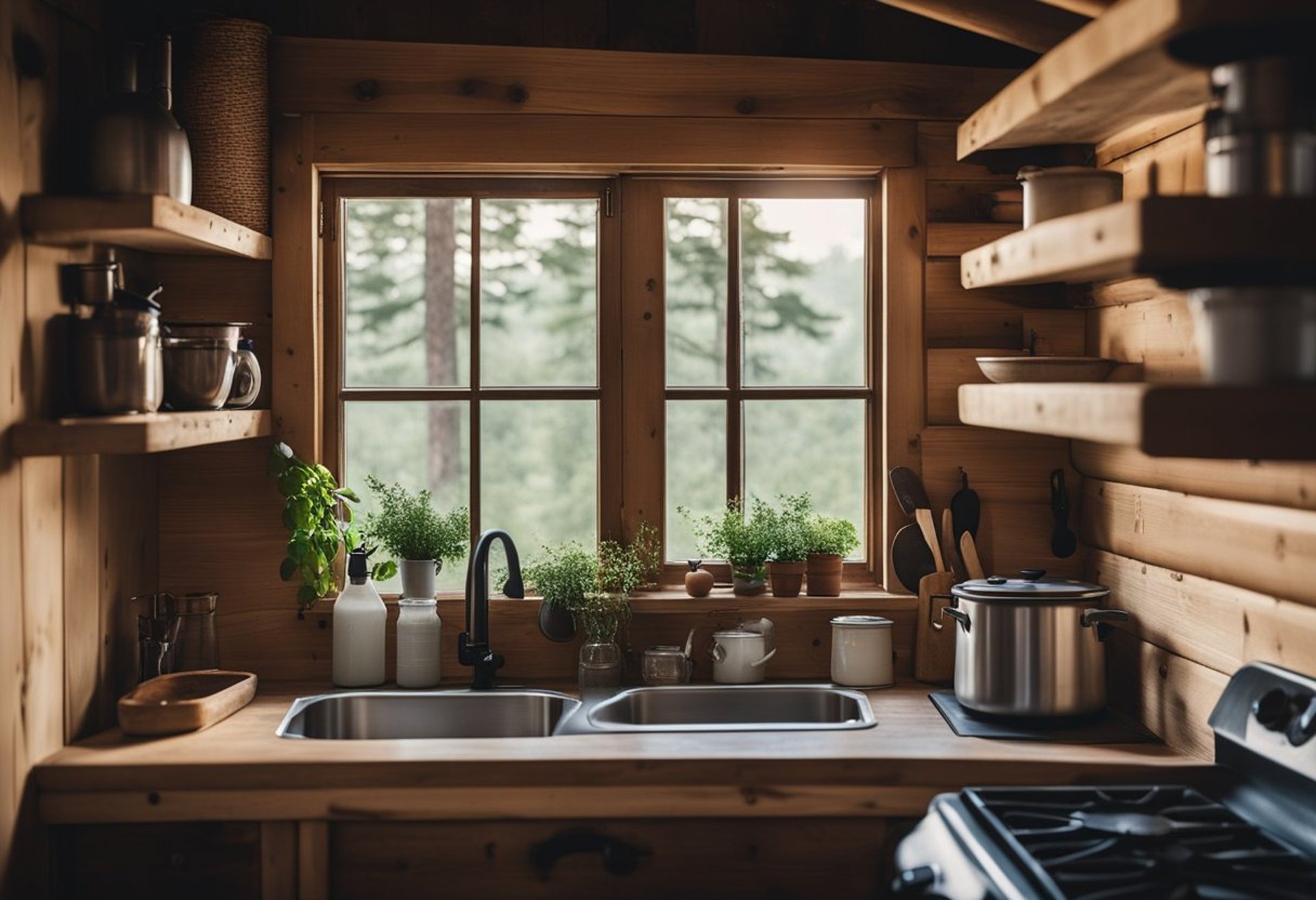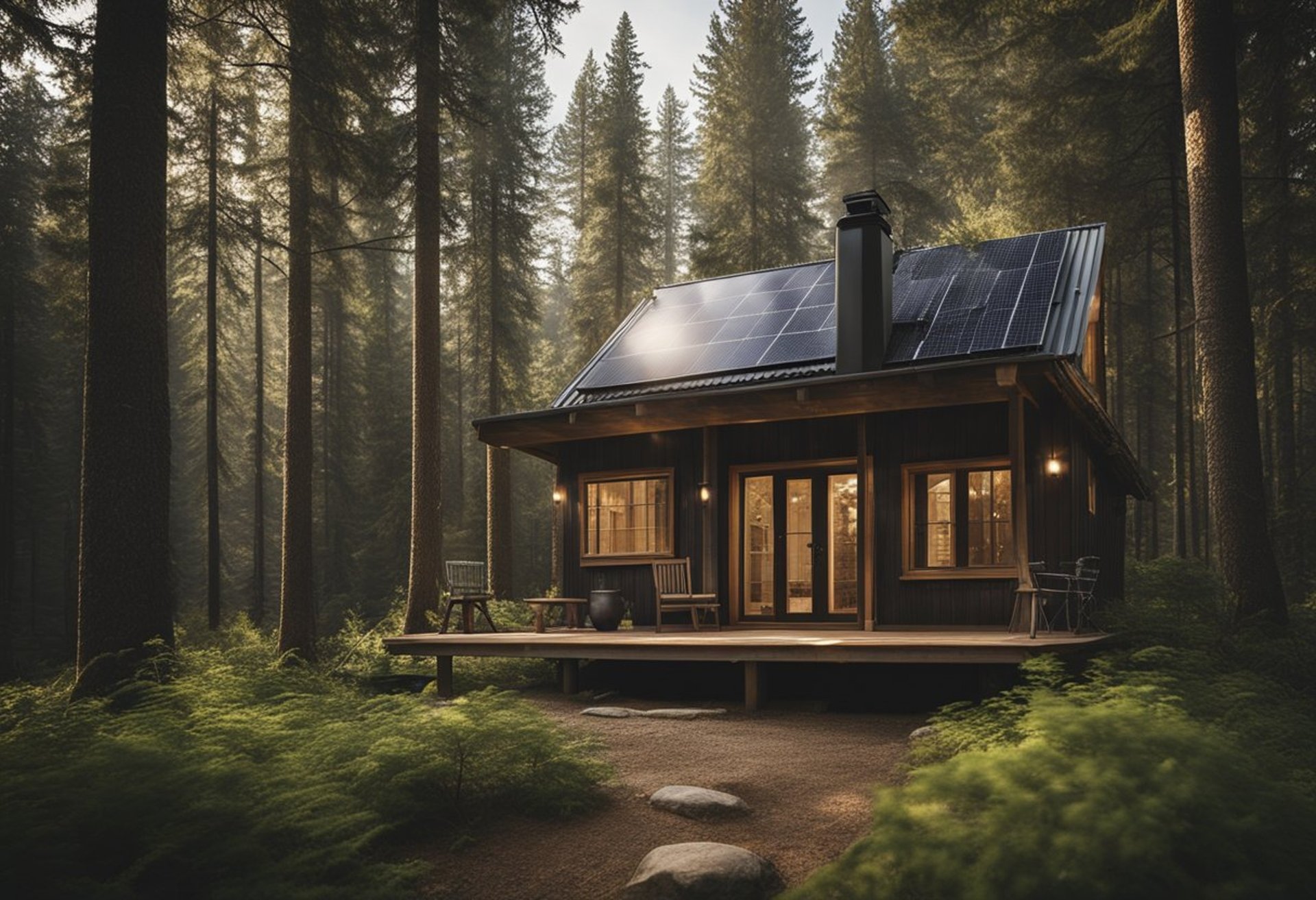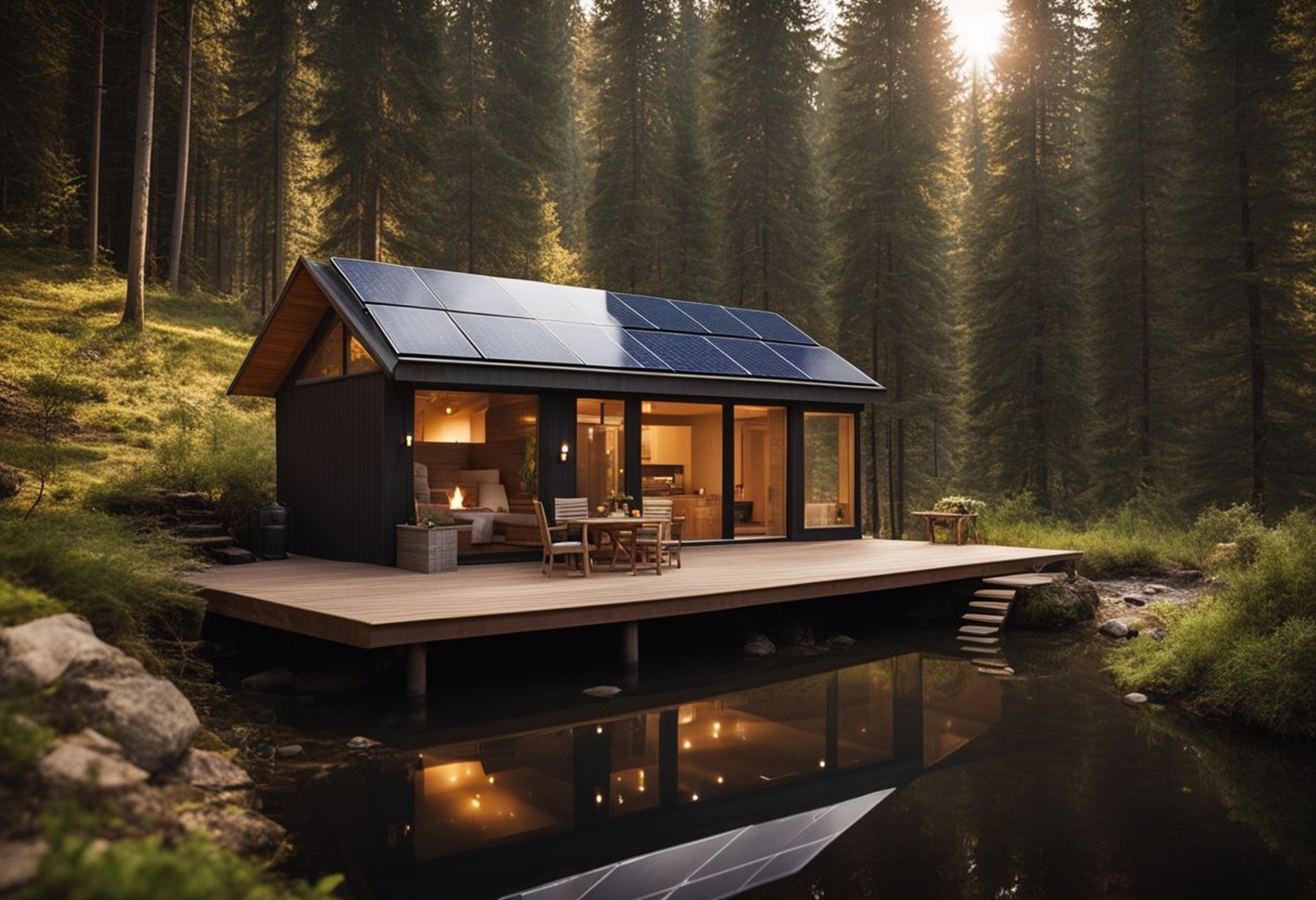Micro Cabin Off Grid: A Sustainable Living Solution for Modern Explorers
Micro cabins offer a compact and efficient way to enjoy off-grid living while minimizing environmental impact. They provide essential functions without the excess, making them an ideal choice for those seeking simplicity and sustainability. This unique approach allows individuals to reconnect with nature, while also embracing the challenge of self-sufficiency.
Micro Cabin Off Grid: A Sustainable Living Solution for Modern Explorers
Micro cabins offer a compact and efficient way to enjoy off-grid living while minimizing environmental impact. They provide essential functions without the excess, making them an ideal choice for those seeking simplicity and sustainability. This unique approach allows individuals to reconnect with nature, while also embracing the challenge of self-sufficiency.
When planning a micro cabin, attention to detail in design and functionality is crucial. From energy solutions to waste management, every aspect needs careful consideration to create a comfortable and practical living space. Those interested in this lifestyle must understand the balance between minimalism and functionality to ensure their micro cabin meets their needs.
Creating a micro cabin is not just about constructing a small house; it encompasses a lifestyle change that promotes independence and resourcefulness. The right design and planning can lead to a fulfilling off-grid experience that resonates with the values of sustainability and tranquility.
Key Takeaways
Micro cabins prioritize efficiency and sustainability in design.
Proper planning is essential for energy and waste management.
Off-grid living offers a rewarding lifestyle change focused on self-sufficiency.
Fundamentals of Off-Grid Living
Off-grid living centers on self-sufficiency and sustainability. Micro cabins can serve as efficient solutions, allowing for a compact lifestyle with minimized environmental impact. Understanding both the benefits and challenges associated with this lifestyle is crucial for those considering such a transition.
Defining Off-Grid Living
Off-grid living refers to a lifestyle where individuals or families operate independently from public utilities. This means sourcing their own electricity, water, and sometimes even food. Many off-grid homes utilize renewable energy systems such as solar panels or wind turbines.
Micro cabins, in particular, embody this lifestyle with their small footprint and efficient design. They often have features like rainwater collection systems and composting toilets. Such homes promote a sustainable way of living while reducing reliance on external resources.
Benefits of a Micro Cabin
Micro cabins provide several advantages for off-grid living. They require minimal energy to heat and cool, significantly lowering utility costs. Their small size also allows for simpler maintenance and lower construction costs compared to traditional homes.
Additionally, micro cabins can be positioned strategically on a property to take advantage of natural light and prevailing winds. With careful design, they can blend into the landscape. This promotes harmony with nature and a smaller ecological footprint.
The mobility of certain micro cabin designs also offers flexibility. Homeowners can relocate if necessary, allowing them to explore different environments without having to build anew.
Challenges of Off-Grid Life
Despite its appeal, off-grid living presents challenges. One significant issue is the initial investment in renewable energy systems and infrastructure. While these systems can save money long-term, they require planning and financial resources upfront.
Living off-grid also demands a strong commitment to self-sufficiency. This includes understanding resource management, maintenance, and weather patterns. For example, storing enough water and preparing for energy shortages can be necessary in certain situations.
Isolation can also be a concern. While many seek out off-grid living for tranquility, it can lead to feelings of loneliness. Building a supportive community, even in remote areas, becomes important for social interaction and practical assistance.
Planning Your Micro Cabin
Planning a micro cabin involves careful consideration of various factors, including the location, choice of materials, and energy solutions. These elements are crucial for ensuring comfort and sustainability while maintaining an off-grid lifestyle.
Location Selection
Selecting the right location for a micro cabin is fundamental. Factors such as proximity to water sources, accessibility, and zoning laws play a significant role.
Proximity to Nature: Look for spots near forests, lakes, or mountains for scenic views and recreational activities.
Accessibility: Ensure the site is accessible year-round, considering road conditions in winter.
Zoning Laws: Research local regulations about building codes, land use, and environmental restrictions.
A well-chosen location enhances both functionality and enjoyment of the cabin.
Sustainable Building Materials
Choosing sustainable materials is essential to reduce the environmental impact of a micro cabin. Consider using:
Reclaimed Wood: This helps minimize deforestation and often adds character to the structure.
Bamboo: A fast-growing alternative that offers durability and sustainability.
Insulation: Opt for materials like sheep’s wool or recycled denim that provide thermal efficiency.
It’s crucial to balance cost and sustainability. Quality materials tend to offer better long-term value and lower maintenance.
Energy Sources and Solutions
Energy solutions are vital for an off-grid cabin. Consider options like:
Solar Panels: A renewable source that can power most needs with proper planning.
Wind Turbines: Suitable for areas with consistent wind, providing an alternative energy source.
Backup Generators: Useful in emergencies or during periods of low renewable energy output.
Incorporate energy-efficient appliances and LED lighting to optimize energy use. Planning for energy sources ensures comfort and independence from utility services.
Micro Cabin Design Essentials
Designing a micro cabin off-grid requires careful planning to optimize limited space while ensuring functionality and comfort. Key elements involve smart layout choices and integrating essential features into a compact environment.
Optimizing Space
Maximizing space in a micro cabin involves creative design choices. Utilizing multifunctional furniture can significantly enhance usability. For instance:
Foldable Tables: They can serve as dining space or workstations, then stow away when not in use.
Murphy Beds: These beds can be hidden during the day, freeing up floor space for activities.
Vertical storage solutions, like wall-mounted shelves, keep items organized without occupying valuable floor space.
Incorporating built-in features, such as bench seating with hidden storage, can also reduce clutter.
Large windows enhance natural light, making the space feel more open.
Maximizing Functionality and Comfort
Functionality is critical in small spaces. Prioritizing essential amenities ensures a comfortable living experience.
Key features to consider include:
Compact Kitchen Setup: A small sink, portable stove, and mini-fridge can accommodate basic cooking needs.
Efficient Heating: Consider a wood stove or compact electric heater for warmth without taking up too much space.
Natural ventilation through strategically placed windows keeps the air fresh.
Adding soft furnishings, such as cushions or throws, enhances comfort while allowing for personalization.
The design should promote a cozy atmosphere, making small living enjoyable.
Cabin Exterior Considerations
The exterior of a micro cabin plays a crucial role in its functionality and sustainability. Key factors include weatherproofing techniques and the cabin's integration into the surrounding environment.
Weatherproofing
Weatherproofing is essential for any off-grid cabin to ensure durability and comfort. Key areas to consider include:
Roofing: A well-sealed roof prevents leaks. Use materials such as metal or asphalt shingles that withstand varying weather conditions.
Insulation: Quality insulation in walls and roofs helps maintain internal temperatures. Foam boards or spray foam are effective options.
Sealing: All gaps and joints should be properly sealed using caulk or weatherstripping. This prevents drafts and moisture ingress.
Materials: Choosing rot-resistant materials like treated wood or composite options enhances longevity against harsh weather.
These tactics help maintain the integrity of the structure and reduce the need for frequent repairs.
Integrating into Surroundings
Integrating a micro cabin into its natural surroundings enhances aesthetics and functionality. Key strategies include:
Location: Select a site that complements the natural landscape. Orientation can optimize sunlight and views while minimizing exposure to harsh winds.
Landscaping: Use native plants for landscaping. This reduces maintenance and conserves water while supporting local ecosystems.
Color and Texture: Choose exterior colors and textures that blend with the environment. Earth tones and natural materials visually anchor the cabin to the landscape.
Access: Design access paths and outdoor spaces that minimize disruption to the ecosystem. Use permeable materials to manage drainage effectively.
Considering these factors fosters a harmonious coexistence with nature, enhancing both aesthetics and functionality.
Interior Design and Layout
Effective interior design in a micro cabin off-grid focuses on maximizing space while maintaining functionality and comfort. Careful consideration of layout ensures that each area is practical and serves its intended purpose.
Living Area
The living area should serve as a multifunctional space, integrating relaxation and utility. An open layout is ideal, utilizing smart furniture choices like sofas that convert to beds or ottomans with storage.
Key Elements:
Furniture: Light, modular pieces are recommended for easy rearrangement.
Lighting: Natural light can be maximized through strategically placed windows. Consider using LED lighting for energy efficiency.
When designing, function takes precedence, but aesthetics also matter. Using a cohesive color palette can unify the space while accent pieces add personality without overwhelming the small area.
Sleeping Quarters
Sleep areas should offer comfort while being minimalist. A lofted bed can free up floor space for additional storage or a small workspace below.
Design Tips:
Bedding: Use compact bedding that can be easily stored away.
Ventilation: Ensure proper airflow through windows or vents to maintain a comfortable sleeping environment.
In addition, curtains or sliding doors can provide privacy when needed. Thoughtfully integrated shelves and hooks will keep items organized and reduce clutter. Prioritizing these elements will enhance the overall comfort and usability of the sleeping quarters.
Kitchen Setup
A compact and efficient kitchen design is essential for micro cabins. Key aspects include selecting the right appliances and optimizing food storage to meet off-grid living needs.
Appliances and Cooking
In an off-grid kitchen, energy-efficient appliances are a priority. Options like propane stoves, solar ovens, and wood-fired cookers provide versatility while conserving energy. He or she should consider the size and power requirements, as smaller appliances often consume less energy.
Dishwashers may be impractical, so using a basin for washing dishes can be effective. Incorporating a portable induction cooktop adds flexibility for cooking needs. Assessing available fuel sources is crucial for selecting the appropriate cooking method.
Essential appliances might include:
Propane stove
Solar oven
Portable fridge
Wood cook stoves
Food Storage and Preservation
Proper food storage ensures sustainability in off-grid living. Shelves should be built using sturdy materials to hold canned goods and dry items. They can also use airtight containers to protect food from pests and moisture.
Refrigeration is often limited. Propane or solar-powered refrigerators serve as excellent choices. For preservation, methods like canning, dehydrating, and fermenting are effective.
Storage tips include:
Use glass jars for long-term storage
Install wall-mounted racks for easy access
Create a root cellar for perishables
This setup allows one to maximize space and maintain adequate food supplies without reliance on traditional power sources.
Bathroom Solutions
Efficient bathroom solutions are essential for off-grid cabin living. Waste management and shower options require careful consideration to maintain sustainability and comfort. Below are key components for an effective bathroom setup in a micro cabin.
Waste Management
For waste management in an off-grid cabin, composting toilets are a popular choice. These toilets break down waste using aerobic bacteria, reducing the volume and creating compost. They are eco-friendly and require minimal water.
Portable options are also available. A bucket toilet can be an economical, simple solution. Users should select biodegradable bags to minimize environmental impact.
Proper waste disposal emphasizes maintaining hygiene. A designated area for waste storage is crucial. Regularly emptying and composting waste ensures cleanliness and health in limited spaces.
Shower and Sanitation
Showers can be a challenge in micro cabins but are manageable with innovative approaches. A solar shower is a practical option that uses sun-heated water, offering a warm wash without electricity. These portable systems are simple and inexpensive.
For a more permanent setup, a rainwater catchment system can provide water for showers. When designing the bathroom, consider installing a drainage system that directs water away from the cabin.
Sanitation should not be overlooked. Incorporating handwashing stations with foot pumps helps conserve water. Additionally, using biodegradable soaps maintains the ecosystem's integrity, crucial for off-grid living.
Planning the bathroom effectively enhances the off-grid experience while ensuring basic needs are met.
Water and Waste
Managing water and waste is crucial for micro cabin living. Efficient systems for collection, filtration, and waste treatment ensure sustainability and comfort in an off-grid environment.
Water Collection and Filtration
Water collection systems in micro cabins often rely on rainwater harvesting. This method channels rainfall from rooftops into storage tanks. The size of the tanks depends on water needs and local rainfall patterns.
Filtration systems are essential for ensuring clean water. Simple gravity filters and advanced UV systems can provide safe drinking water. Install filters at various stages, including:
First stage: Pre-filtration to remove debris.
Second stage: Carbon filters for taste and odor.
Final stage: UV treatment to eliminate pathogens.
Access to dependable water is critical, especially in off-grid cabins where plumbing infrastructure is absent.
Greywater and Composting Systems
Greywater systems recycle water from sinks, showers, and laundry for garden irrigation or flushing toilets. These systems are designed to filter out solids and impurities effectively, reducing waste.
Composting toilets provide an eco-friendly alternative in the off-grid cabin bathroom. They process human waste into compost through aerobic decomposition. Key features include:
Ventilation systems: Reduce odors and promote airflow.
Separation features: Keep solid and liquid waste separate for better processing.
Both greywater and composting systems enhance sustainability, minimizing the environmental impact of off-grid living.
Power and Energy Solutions
Off-grid living in micro cabins requires efficient power and energy solutions. Sustainable options, particularly solar power, are essential for providing reliable energy without relying on traditional grids. Alternative energy sources also play a vital role in enhancing energy independence.
Solar Power Systems
Solar power systems are a primary energy solution for off-grid micro cabins. These systems typically consist of solar panels, an inverter, a charge controller, and batteries for energy storage.
Key components include:
Solar Panels: These capture sunlight and convert it into electricity.
Inverter: This changes direct current (DC) from solar panels into alternating current (AC) for home use.
Charge Controller: This regulates voltage and current from the solar panels to the batteries, preventing overcharging.
Battery Storage: Provides backup power during cloudy days or at night.
A well-designed solar system can cover most of a micro cabin’s energy needs, making it a reliable choice for off-grid living.
Alternative Energy Options
In addition to solar power, several alternative energy options can complement energy needs in a micro cabin. Wind turbines, micro-hydro systems, and biomass generators are practical solutions.
Consider the following:
Wind Turbines: These are effective in areas with consistent wind. A small turbine can generate sufficient power for basic needs.
Micro-Hydro Systems: Ideal for cabins near flowing water. This system converts the kinetic energy of flowing water into electricity.
Biomass Generators: These can provide power through the combustion of organic materials, offering a renewable alternative.
By combining these energy sources, one can create a robust energy system that enhances sustainability and self-sufficiency in a micro cabin lifestyle.
Maintaining Your Off-Grid Cabin
Proper maintenance is essential for ensuring the longevity and functionality of an off-grid cabin. Regular upkeep and seasonal preparations help prevent larger problems down the line.
Routine Upkeep
Routine maintenance should be part of every off-grid cabin owner’s schedule. Regularly inspect the exterior for signs of wear, such as cracks in the siding or roof. Address any minor damages immediately to prevent further issues.
Keep the plumbing system functional by checking for leaks. Maintaining water filtration systems ensures clean water. Ensure that solar panels are free from debris and functioning efficiently.
A thorough cleaning of the interior, including dusting and sanitizing, helps keep the space inviting. It’s also important to periodically check and replace batteries in solar systems and emergency supplies, ensuring readiness for unexpected situations.
Preparing for Seasons
Preparing for changing seasons is crucial to maintain comfort and safety in an off-grid cabin. In colder months, insulate pipes and check heating systems to ensure they are operational. Stock up on firewood and other heating sources well before the first cold snap.
In warmer months, it’s necessary to inspect the cabin for pests. Seal any gaps and ensure screens are intact. It's beneficial to clean gutters and downspouts to prevent water damage during heavy rain.
Additionally, check outdoor equipment, such as generators and tools, ensuring they are serviceable when needed. Regular seasonal maintenance can greatly enhance the cabin's resilience and overall livability.





